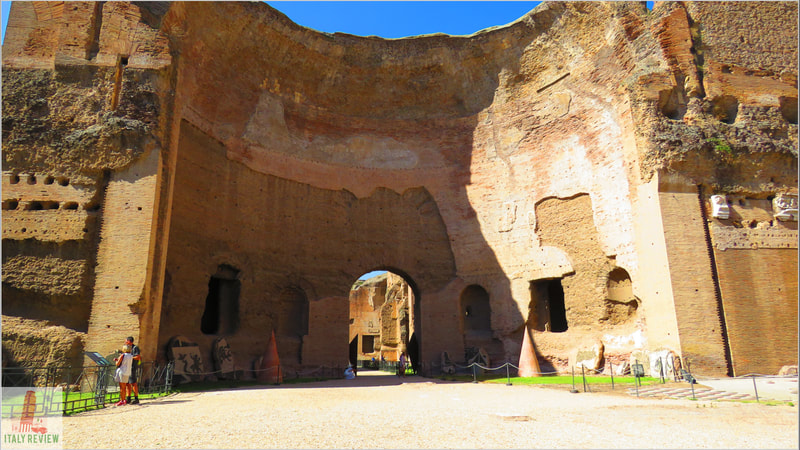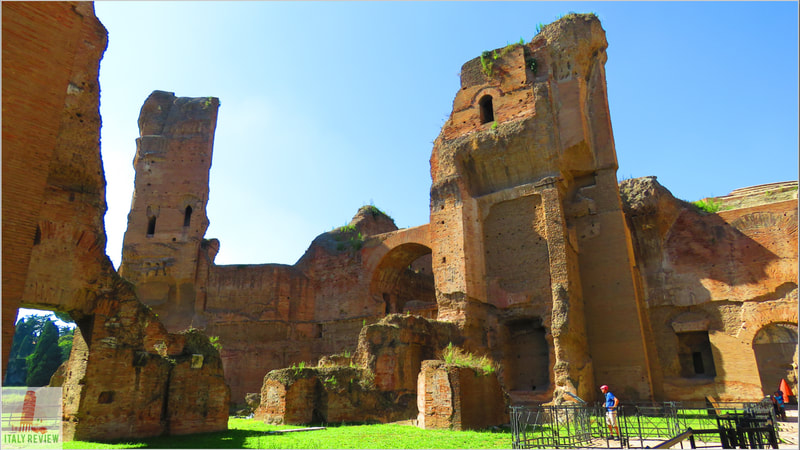Baths of Caracalla
|
By Dion Protani
|
Latest update: 23 January 2024
|
|
The Baths of Caracalla in Rome were built around 216 AD, towards the end of the joint-rule of the Emperor Caracalla. At the time of their construction, they were the second largest public baths in the city, smaller only than the nearby Baths of Diocletian.
During modern times, the site is one of the most important archeological areas in Rome but also an outdoor concert venue. |
Related links
Profile
The Baths of Caracalla, also known as the Terme di Caracalla in Italian, are ancient Roman public baths located in Rome, Italy. These grandiose baths are one of the largest and most well-preserved thermal complexes from ancient times, providing visitors with a glimpse into the opulence and engineering prowess of the Roman Empire.
History
The Baths of Caracalla were built by the Roman Emperor Caracalla, also known as Marcus Aurelius Antoninus, and were inaugurated in AD 216. The baths were a monumental project, covering an area of over 28 acres and capable of accommodating around 1,600 bathers at a time.
The complex included a vast central bathing area, extensive gardens, libraries, and various recreational spaces. The baths remained in use for several centuries before falling into disuse and eventually being abandoned.
The complex included a vast central bathing area, extensive gardens, libraries, and various recreational spaces. The baths remained in use for several centuries before falling into disuse and eventually being abandoned.
Key features
- Architecture: The Baths of Caracalla boast stunning architecture, with grand vaulted ceilings, marble floors, and intricate mosaics. The central bathing area, called the frigidarium, features a massive semicircular pool.
- Ruins: While the baths are not fully intact, significant portions of the structure remain remarkably preserved, allowing visitors to visualize the scale and grandeur of the complex during its heyday.
- Audio Guides and Information Boards: Audio guides and information boards are available on-site, providing historical context and details about the different areas of the baths.
- Accessibility: The Baths of Caracalla are located just a short distance from the city center of Rome and are easily accessible by public transportation or on foot.
- Opening Hours and Admission: The baths are open to the public with regular opening hours. There is an admission fee to enter the site, but it is included in some Rome sightseeing passes.
- Guided Tours: Guided tours are available for those who wish to learn more about the history and significance of the Baths of Caracalla. A guided tour can provide deeper insights into the functions and daily life within the ancient thermal complex.
- Opera Performances: During the summer months, the Baths of Caracalla serve as a stunning backdrop for opera performances, concerts, and other cultural events. These open-air performances provide a unique and enchanting experience for visitors.
Terme di Caracalla
|
City: Rome
Province: Metropolitan City of Rome Region: Lazio Completed: 216 AD Nearest Metro stop: Circo Massimo - Line B - 700 m - 9 min walk Fly to: Rome Fiumicino Airport - 24 minutes by car (27 km) Close by: Circus Maximus, Pyramid of Cestius, Arch of Constantine Recommended accommodation: Hotel Artemide |
UNESCO World Heritage Site
Historic Centre of Rome, the Properties of the Holy See in the City Enjoying Extraterritorial Rights and San Paolo Fuori le Mura
Year: 1980
Historic Centre of Rome, the Properties of the Holy See in the City Enjoying Extraterritorial Rights and San Paolo Fuori le Mura
Year: 1980























